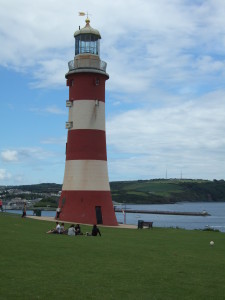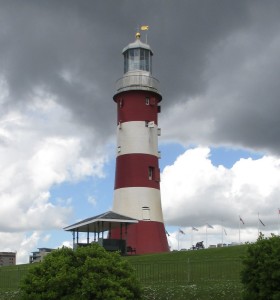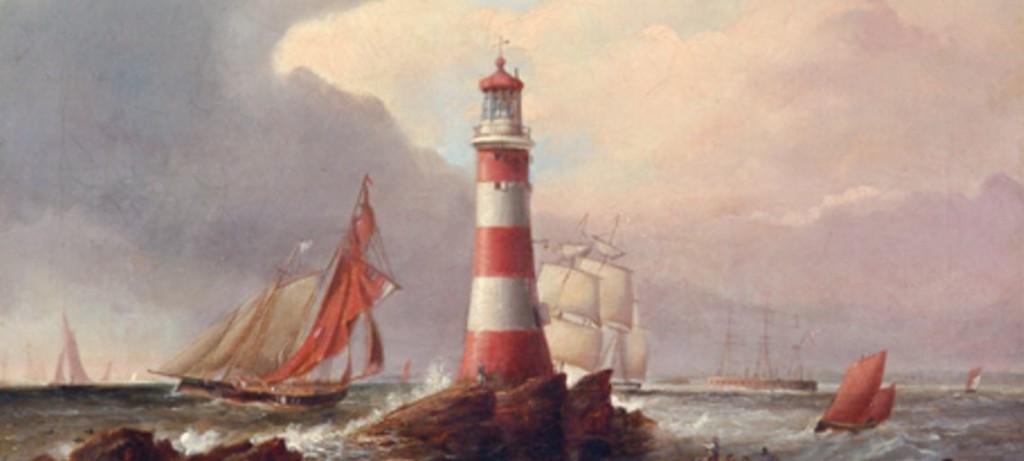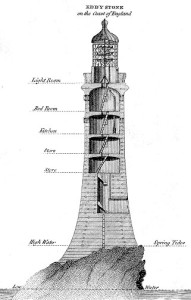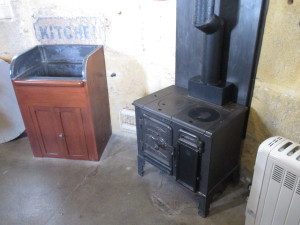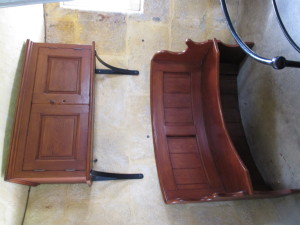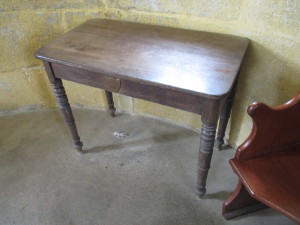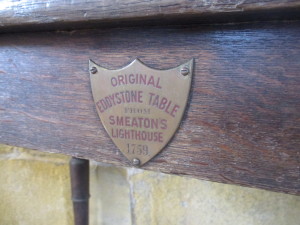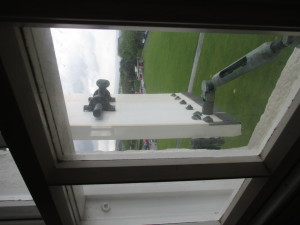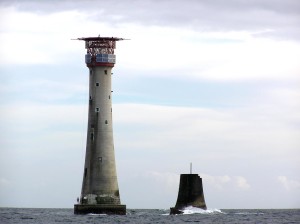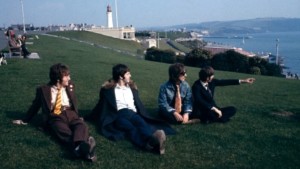Last weekend we were in Devon, and visited Smeaton’s Tower on Plymouth Hoe. Now landlocked, this lighthouse once stood on the distant Eddystone Rocks, the third incarnation of the Eddystone Lighthouse there. Designed by John Smeaton, it is an important and historic lighthouse, the first in the world to have the now-iconic curved profile that we all know, with the first modern use of hydraulic lime (a form of concrete that sets under water), and the first lighthouse to use dovetailed granite blocks that locked together and gave the structure added stability. It was built between 1756 and 1759.
The Eddystone Rocks lie 14 km (9 miles) off the Plymouth coast. Plymouth has been a historically important port for centuries, and many ships had been lost on the rocks of the reef. The first lighthouse, made of wood and designed and built by Henry Winstanley, was built there between 1696 and 1698, the first ever off-shore lighthouse in the world. The 60-candle light was first lit in 1698, and the lighthouse operated until the Great Storm of November 1703 completely destroyed the lighthouse and killed the six men in it, Winstanley included. The second lighthouse, John Rudyard’s Light, operated from 1709-1755. This lighthouse was built of wood and stone, stood 21 metres high and was lit by 24 candles. It burnt down in 1755.
Smeaton’s Lighthouse was the third iteration on the site. Smeaton built the lighthouse with a treetrunk-like shape to give it a low centre of gravity, and used fireproof materials: Cornish granite blocks on the outside and lighter Portland stone masonry on the inside, held with the hydraulic lime concrete he developed and cleverly interlocked for additional structural integrity. The curved shape had the added benefit of dissipating some of the energy of the waves which struck it.
It stood 22 metres high, and was first lit with 24 candles, and later replaced by oil lamps and reflectors, and later still a lens replaced the reflectors, intensifying the light emitted. Going on the number of beds inside, it had a crew of two or three, and the living areas were small and spartan.
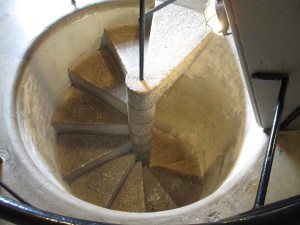
Access in the lower parts is by central spiral staircases like this, and in the upper parts by ladders.
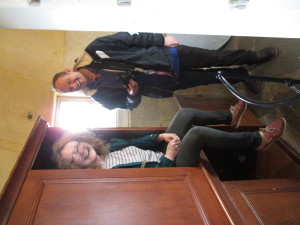
The beds were tiny – my 1.68 m (5′ 6″) tall sister just fitted inside this one, but at least you could close the doors for some privacy!
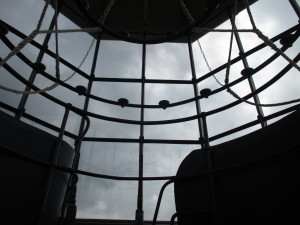
Looking up into the lantern. You can walk around the outside by the lantern, but my not very good head for heights kept me firmly inside.
Gradually heavy weather eroded the rock base on which the lighthouse stood, causing it to shudder in storms. The lighthouse was dismantled in 1882, apart from the bottom few metres which were too solid to be removed and remain to this day as a stub on the rocks, and the lighthouse was transported to Plymouth and rebuilt on the Hoe. Work on the replacement lighthouse out at sea, Douglass’s Lighthouse, started in 1879, was operational in 1882 and continues to work to this day.
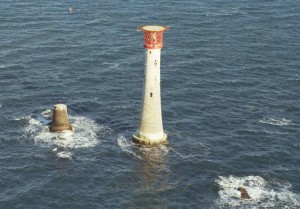
The stump of Smeaton’s Lighthouse on the left, with Douglass’s Lighthouse, the present-day Eddystone Lighthouse on the right. Photo by Steve Johnson.
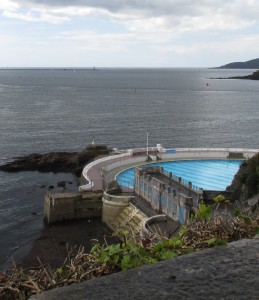
The Eddystone Lighthouse and Smeaton’s stump are just visible in this photo, taken from above the Lido in Plymouth. The lighthouse is on the horizon, to the right of the light on the end of the breakwater. Click on photo to enlarge, and then click again to enlarge further. And then squint.
Smeaton’s Tower is a Grade I listed building, the highest grade.
And lurking in the background of a photos of the Beatles at the Hoe in 1967 is the tower, before its red and white striped paint job was reinstated.
Smeaton’s Tower is well worth a visit. The opening times are on Plymouth City Council’s website. There is a small charge for entry.
Plymouth City Council website information on the four Eddystone lighthouses.
